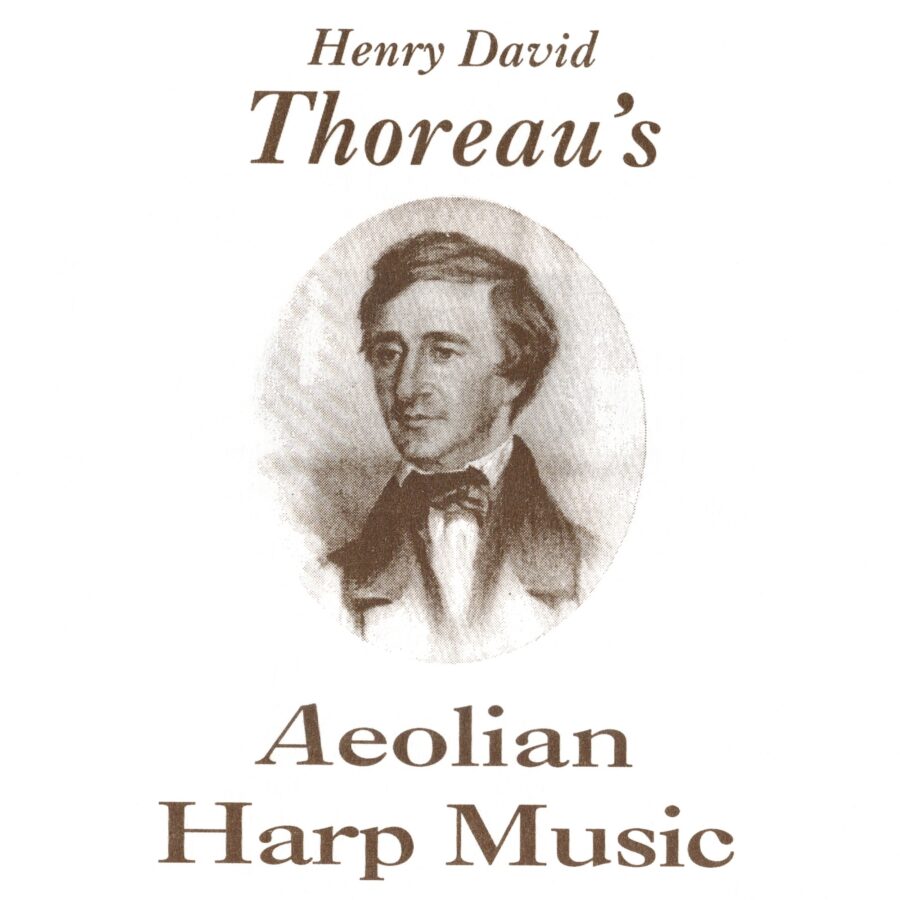

Universal meditative music played by the wind, on a replica of the Aeolian Harp designed by American naturalist Henry David Thoreau.
Artist statement:
I grew up in Concord, Massachusetts in a musical home. Both parents were musicians — a marching band trumpeter father and a piano and church organ hymn playing mother. I started on the trombone at age seven, my sister the played violin, and later my younger brother played the bassoon. I grew up hunting for the right pitch by ear, and could pick up most instruments and figure our how to play them.
It continued this way for many years, playing around with the harmonics hiding in each string. I travailed to the Olympic Peninsula one winter in 1975, and found myself tuning up a friend’s new violin. Later on back in Concord a neighbor introduced me to a reproduction of Henry Thoreau’s Aeolian harp. This was Esther Anderson, a founder of the Thoreau society and photographer of Thoreau’s favorite places. She asked F. M. Oliver to make a copy of the harp for her. She showed me and I was hooked. As I researched other harps I understood that Thoreau’s sense of simplicity was perfect.
Thoreau wrote a poem, Rumors from an Aeolian harp, as much about his brother John and heaven. I collected the poetry and literature mentioning the Aeolian harp and the wind, and how they are transcendental actors in our lives. I started to build an inventory of recorded wind harp music when I placed these Aeolian harps in my windows. I found the design using three strings perfect for hearing the harmonic series compliment and contrast with the various string harmonics.
The wind harp inspires with its harmonies and awes with its dissonances, but mostly sits mute. Its music touches many related fields — science, art, math, religion and history. I took an Ancient Greek history class at UMass Lowell to better understand the meaning behind the word Aeolian. The dictionary definition of the Aeolian harp (box or window harp) does not include Henry Thoreau’s three stringed harp — Aeolian harps are technically three or more strings. Nor does it include any of the modern sculptures generally referred to as wind harps. These window Aeolian harps are considered a zither, as the strings are parallel to the sound box, whereas a harp’s strings are vertical to the sound box. We must classify everything, it seems.
One of the most rewarding activities is my research, whether on the harmonics, the poetry, physics, the wind, or the origins of stringed musical instruments. Another enjoyment is in the making or the recordings of the harp music and the birdsongs, at least until a car goes by or worse, a plane, which lasts much longer. Recording has made me more in tune with other natural sounds like the “tree harmonica” one hears in the buzzing friction of two trees rubbing together in the wind. I’ve come to know the booming of river ice and frozen ponds, and the sounds of the frogs in the spring and summer. The bird songs have been a joy to find. I first heard the birds Thoreau loved best near my New Hampshire home. The Thrushes would nest nearby and visit my home for years, until loggers destroyed their nearby nesting places. A few are slowly returning now. There are three local Thrushes — the Wood Thrush can be found in many locations; the Hermit Thrush in dense woodlots; and the Veery, who likes to be near swampland. Thoreau’s Night Warbler is another story. Thoreau did not know which bird was warbling at night until he observed that the night warble was also a mating warble. He watched the Warbler fly above treetops and open fields, hovering and then warbling the complex song, then diving back into the woods, which is how Henry found out that it was his “teacher, teacher bird”. (We also call it the “Oven Bird” after its beehive oven-styled nest in the low bush blueberries.) These birds chase each other through the woods at high speeds — one once brushed my face with its wing. A typical flight song might be four or five seconds long, and one might capture it from 100 feet away or more. Once I spent many nights of camping on our hilltop to capture the sounds of the Warbler, with nothing to show for it but a recording of a fox barking at me. But then I heard a single chip, and then another. I set up my recorder and found myself maybe 20 feet away from the source. After a minute of chipping, there was a clear, blistering, complex warble ten seconds long, then more single chipping, and then the bird left. That was a gift.
I love hearing from people and learning about their connections. One customer reported enjoying the music along with a radio program playing Borneo cicadas. I heard from Mennonites and other people with biblical interests. I heard from many romantic and transcendental explorers. The Thomas Cole museum has an Aeolian harp; a curator reported that my recording sent their cat running away at first, and then returning to doze by the birdsong portion. Another man reported crying upon first hearing an Aeolian harp. Some people described finding a comfort while grieving a loved one. More than one reported hearing music when a loved one died, and that the music sounded like an Aeolian harp.
I unfortunately suffer from tinnitus from some noise injury in the past, but it has not dulled my interest in music.
I had an opportunity to speak to a group called The Gentle Muses at their conference on vibro-acoustic healing, and gave a workshop at the Peabody-Essex Museum helping people build their own harps. Other past jobs and hobbies of mine included woodworking and furniture building, wood collecting, wood sculpture, and musical instrument collecting and repair. I was employed as a pipe organ restorer in the 1980’s — ironically working on Aeolian organs.
I have an interest in Concord history, the First People here and the first European settlements. We seem to have abandoned Thoreau’s goal to honor simplicity, sound and solitude. Some believe that every sound is infinite, each vibration is energy which creates heat. It’s very cold today in New Hampshire. Let it be.
KAT, February 2022
“The strains of the Aeolian harp and of the wood thrush are the truest and loftiest preachers that I know now left on this earth… The contact of sound with a human ear whose hearing is pure and unimpaired is coincident with an ecstacy.”
Henry David Thoreau, 12/31/1853
released January 1, 1994
Download includes PDF reproduction of original fourteen page CD booklet.
Recorded and Produced by Kenneth Turkington in Brookline, NH
Reissue produced by Douglas Mcgowan and Tyler Craft
To purchase a custom Wind Harp, please contact Walden Winds • 1-800-692-HARP
Copyright 2022 Yoga Records